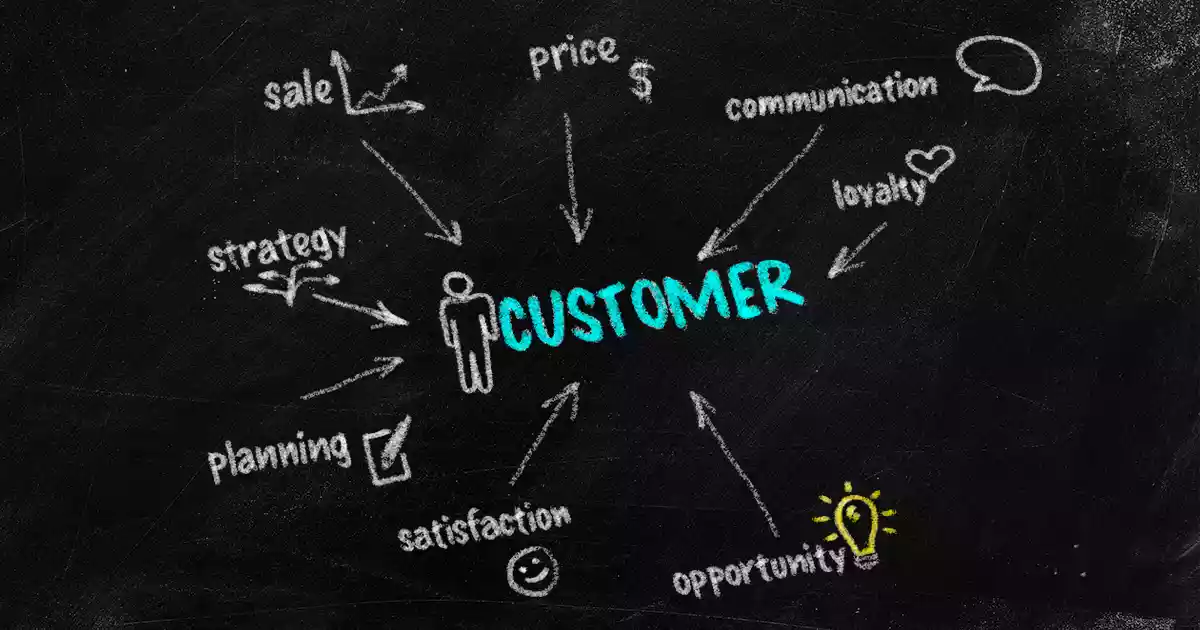
Customers’/consumers’ tastes are fast-paced today, changing than at any time in the history of humankind existence.
While the catchword in today’s business seminars and strategy formulation process is that “our companies/brands should be customer-focused.” We, as thriving SMEs, lack clarity both in understanding how this can be done and also in practice (existence of a mired contour).
This is more pronounced given that there are legacy brands that were not established in this form of strategic aspiration, which focuses on customer dilemmas, but has been successful.
While on the other hand, those that emerged post-internet were found to be strong in the same focus, and these seem to be very few. In this week’s instalment, we tackle this complex issue with the hope to contributing towards local and African brands rethinking their approach and adopting a customer focus approach.
This is when the entrepreneurial business will be branded as the solver of customer dilemmas rather than a mass marketing approach which sometimes tends to forget the problems/needs of the minority.
As noted already, the legacy companies that constitute the bulk of the business ecosystem in Zimbabwe and the continent might, one way or the other, hold the notion that they are customer focused, yet the design of their existence is product/service focused (marketing myopia).
It is easy to notice as they, by and large, measure their success or impact through a quantified means of sales, products and how they are organised through silos. This type of measurement of the business and brand performance makes it easy to think of the customer last, yet they are at the centre of the brand and company existence.
Many of our SMEs seem to be following the same bandwagon, I revert to the adage “Once bitten, twice shy.” We shouldn't fall to the same mistake as these legacy businesses, let’s reconfigure to be proactive in handling the dilemmas of our customers/markets. This comes as an opportunity for us to win against competition by the market giants through having a closer ear that listens to the customers’ concerns and satisfies them as expected timely.
- Sally Mugabe renal unit disappears
- Chaos as NatPharm fails to supply drugs
- Hospitals turn away pregnant women
- 1 748% hike in hospital fees
Keep Reading
Before diving deep into the conversation, we must attempt to paint a picture of what constitutes a customer-focused company/brand. Three main pillars define the customer-focused company, which greatly mitigate the dilemmas of paying lip service to the concept. These are accessibility, functionality, and emotional pillars.
Accessibility entails the ease with which the customers find the brand and company. The rationale behind this pillar is that the more accessible the brand/company, the easier it becomes for the brand/company to create and support a customer experience, leading to the customer choosing the brand over competing experiences.
For the local brands and African ones struggling with this process, it requires being both available online and offline and equally being integrated with the target markets being part of the target market spaces, on both online and offline spaces.
Surprisingly, Chinese products dominate in solving the broader needs of our local markets, yet we are more accessible to these customers (something is very wrong here). It is high time our SMEs should take ownership of this accessibility and be branded as such.
Functionality poses the major challenge that the bulk of the organisations under the sun invest heavily in this pillar alone since they were established during the age of product/service focus and ignore the rest. Though our SMEs are even viewed as producers of goods/services which do not function or last the promise.
This is unfortunate as the organisation or brand cannot stand on this one leg alone but requires the other two, as highlighted already. This is a process-centred pillar focused on ensuring that the product or service locates the customer, wins and retains them for as long as possible when the value for money is met through a product/service that performs and even exceeds the initial promise(s).
Emotional while these three are critical in the crafting and sustenance of the customer-focused organisation, this is the most critical pillar as it attends to customer feelings as an emotional variable.
By nature, human beings rely on their feelings to remember a brand or company’s offerings hence the need to effectively condition the brands towards brand equity, which is the ability for the company to effectively position itself in the customer's mind in aiding decision-making. Generally speaking, the scale of customers remembering an experience with the brand or company can range from good, bad or nothing. The worst case scenario is the last of the three that is, remembering nothing. It means you are failing on all the pillars, including the traditional one of functionality.
Unpacking the customer experience process
Having painted the canvas on the key pillars that define a customer-focused company, it is, therefore, imperative to unpack the process and, in a way helps the local and African brands with the pointers on the process to undertake for their sustained existence which is rooted in customer satisfaction. The process is in three main nodes, namely random, intentional and differentiated experiences.
Random experience is an outcome of the companies or brands delivering random, erratic or unexpected services or products. If you are in the Zimbabwean context, think of calling your mobile network operators, city councils, and state enterprises. If you are in South Africa, Uganda, Nigeria, Lesotho etc, think of calling a certain bank requesting to start operating a bank account. You can vividly paint the picture that you might be attended to, you might not be attended to, or you might try repeatedly until you are frustrated. In essence, it’s a game of probability. Yet if you ask the employees and management of these entities, “how is work?” the response is highly likely, “we are very busy these days!”. This is the major challenge as a bad experience by the customer is extremely costly to the brand, hence the need to be configured in a manner that allows for consistency as a value unlocking process and competitiveness.
Intentional experience is an outcome of the imperative process of measuring customer needs. You can only better understand the customer by deliberately measuring their levels of satisfaction and what the customers themselves hold fondly as valuable through a deliberate process of gauging the levels periodically.
Further, this requires the entire company web to be focused on the same through knocking down the silos and moving towards a deliberate process of organisation functions working collaboratively rather than competing for the stretch resources. Yet, due to the Covid-19 pandemic, organisational functions are increasingly scattered and competing rather than collaborating hence the dilemma that arises when attempting to focus the company on the customer.
Differentiated experience is the ultimate goal. This is another dilemma, as the bulk of the companies that create this customer-focused enterprise were designed that way from inception.
However, the essence of this article is to condition more to engage in strategic shifts and refocus their brands and companies. The advantage of African business is in the ability to leapfrog learning from challenges elsewhere. The companies that pursue this process sustain their approach as they go beyond the differentiation by products and services rather, they build a differentiated experience ecosystem around the customer by actively engaging and rooting everything they do in the customer.
Way forward is that there should be a leadership decision to refocus the company brand on the customer. This is then shared across the entire structure of the organisation by attending to two of my issues: A strategy that is customer focused and a customer experience strategy. This will knock down the silos and define the collaboration tempo towards the focus of the customer at the centre of the brand and business.
The two documents will also define the culture required to serve the customer. In terms of the practice, start with the internal and strategic meetings.
The conversations and presentations must start with what the customer is saying, feeling, liking, disliking and behaviour as this shape the ultimate experience.
This means that the more to talk about the customer experience before focusing on the numbers, you are shaping the thought process of the team and, subsequently, how they view the customers and their role in ensuring that they are a service to the customer and that at the centre of the company's gravity is the supremacy of the customer.
Hence strategy and the customer experience strategy should seamlessly establish the culture of customer focus – be deliberate! Till them whatever you do, the customer first, brand it and scale it up!
Dr Farai Chigora is a businessman and academic. He is the head of Business Science at the Africa University’s College of Business, Peace, Leadership and Governance. His doctoral research focused on business administration (destination marketing and branding major, Ukzn, SA). He can be contacted for feedback at fariechigora@gmail.com, WhatsApp mobile: +263772886871.
n Dr Tabani Moyo is a doctor in Business Administration (Research focus on new media and corporate reputation management, UKZN), chartered marketer, fellow CIM, Communications and reputation management expert based in Harare. He can be contacted at moyojz@gmail.com @TabaniMoyo (Twitter)









